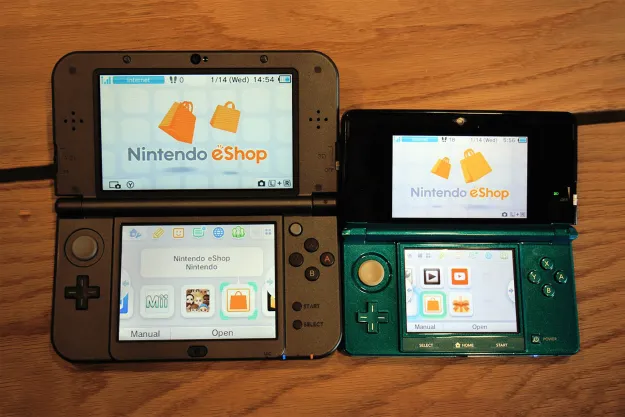Nintendo last week announced its intentions to shut down the Wii U and 3DS eShops, the systems’ digital storefronts, in March 2023. This decision was disappointing for hardcore fans who stuck with Nintendo during that rocky era and extremely worrying as many of the games available on the platforms won’t be preserved.
More significant Wii U games and a handful of 3DS titles were ported to Switch, but many titles are still stuck on those systems and can’t be ported. Once the digital storefront shutdowns, digital-only titles will be gone forever, and physical copies of these titles will get more expensive and harder to experience. Fans and game preservationists have not been pleased by this decision, with the Video Game History Foundation giving the most candid response.
Our statement on the closure of Nintendo's legacy digital shops. pic.twitter.com/mG5GzuGH4G
— Video Game History Foundation (@GameHistoryOrg) February 17, 2022
Following this announcement, Digital Trends spoke to an industry analyst and game preservationists to get a better idea of what exactly caused Nintendo to shut down these stores and to learn how it could do a better job at preserving its legacy.
Why is Nintendo shutting down the 3DS and Wii eShops?
Officially, Nintendo’s FAQ on the eShop closures says “this is part of the natural life cycle for any product line as it becomes less used by consumers over time.” The answer doesn’t get into specifics and might confuse those still playing games on the system or fans of games only available on Wii U or 3DS. Omdia Principal Analyst Matthew Bailey explains Nintendo’s user base argument in more detail, highlighting the massive gap between the number of people playing the Switch as opposed to the Wii U.
“While Omdia expects the number of Switch consoles in active use to exceed 90 million on a global basis this year, the Wii U’s global active installed base will drop under one million in 2022,” he explains. “Even when you include the more enduring 3DS family of consoles into the equation, the Switch still comfortably accounts for over 90% of Nintendo’s total active console install base.”
If one is going off just the numbers, it’s sensible that Nintendo would want to focus on the majority of its players. Bailey admits that “Switch users are already reaping the benefits of Nintendo’s singular first-party development focus on one platform.” Still, one might argue that Nintendo should just let the eShops remain up even if it isn’t actively updating or maintaining them.

Unfortunately, Nintendo doesn’t see that as possible due to cost and security issues. Game Over Thrity, a Twitter user with over 20 years of experience working on IT projects and infrastructure, shed some light on what might have influenced Nintendo’s decision-making in a thread.
“As these systems age, they require patches, security, special contracts, updates, and personnel that know how they were built (and maintained),” his Twitter thread explains. “As time goes on, there are security holes, servers, code, infrastructure, etc., that can’t be brought up to modern standards. It becomes a constant struggle between maintaining legacy systems, paying people to do so, and trying to keep up with global regulations. It’s not cheap by any means. They can’t just ‘leave the lights on’ and stop supporting them. What if someone hacked the payment processor?”
With every passing year, the Wii U and 3DS eShops likely became more expensive to maintain and an increased security risk for the video game publisher. Instead of investing the time and resources into pleasing a smaller amount of players, the easier option is to turn everything off entirely. While he isn’t affiliated with Nintendo, Game Over Thirty’s assessment aligns with what we’ve heard from Nintendo and Omdia.
“The Wii U’s global active installed base will drop under one million in 2022.”
In the end, the eShop closure decision appears to be solely driven by security, revenue, and user base concerns. That can be hard to understand for hardcore fans passionate about these systems, but sometimes reality is disappointingly clinical. Whether or not people agree with Nintendo’s decision to shut down the Wii U and 3DS eShop, most fans, analysts, and preservationists could agree on one thing: Nintendo needs to do a better job at preserving the games exclusive to these platforms.
How can Nintendo preserve its legacy better?
The Nintendo Switch is not backward compatible with the Wii U or 3DS, so the titles on these stores are stranded unless a developer goes through the time and effort to port them to new platforms. Nintendo even admitted this in a now-deleted portion of the FAQ.
So far, multiple solutions have been proposed. The Video Game History Foundation says in its statement that Nintendo should find better ways of working with external institutions to preserve its work. The Game Preservation Society, a Japanese nonprofit organization dedicated to preserving the game industry’s legacy, also chimed in on the matter to Digital Trends.
“Nintendo did a bad job at preserving its history until they understood the potential of their old catalog after launching the Wii,” President Joseph Redon said. “To my best knowledge, they now preserve all assets, just like Disney would do for their works. What is not preserved is content from third parties and indie developers. I think that digital-born content should be preserved by structures like the Library of Congress. The archives have to quickly adapt to digital.”

Most games are preserved solely through emulation and piracy, which is legally dubious and not condoned by Nintendo. While gaming and other digital media are becoming increasingly relevant culturally, it’s clear that this content is not being preserved as thoroughly as it should be. That lack of effort makes the closure of the Wii U and 3DS eShops so concerning.
“Online shops provide much value to consumers, but it’s unreasonable to expect them to last forever,” Game Preservation Society member Damien Rogers told Digital Trends. “We must continue to encourage development companies to preserve their works and to convey to the public their preservation efforts so we can be assured their games, which are important cultural assets, are still available in the future.”
“Nintendo did a bad job at preserving its history until they understood the potential of their old catalog after launching the Wii.”
One day, the Nintendo Switch eShop might be in the same situation, and titles that take advantage of the platform’s unique gimmicks like 1,2 Switch and Nintendo Switch Sports might be lost to time. As such, it’s clear why everyone wants Nintendo to do a better job of ensuring that all of its games are preserved and possibly even compatible with future platforms. Omdia expects Nintendo to improve its backward compatibility offerings going forward.
“We expect backward compatibility to be a core component of Nintendo’s next-gen console offering,” Bailey asserted. “We could also see Nintendo bring access to more of its back catalog through its Switch Online service, but this likely won’t appeal to users who have already paid to own these games on older Nintendo consoles or for those looking to play older third-party titles.”
With digital stores, players get much quicker access to content, and indie studios have a much easier time promoting and selling their games. Still, the video game industry and companies like Nintendo do a tremendously poor job at preserving what is actually on those platforms. Nintendo should double down on backward compatibility, whether that’s through ports, its Nintendo Switch Online subscription service, or by simply working with organizations like the Video Game History Foundation to preserve its titles and other digital assets.
In a worst-case scenario, we’ll be having this discussion all over again in five or 10 years when Nintendo sunsets the Switch eShop. Hopefully, Nintendo learns its lesson and improves, so people like Redon don’t have to deal with a “nightmare” situation like this again.
“I think that digital content is a great evolution for many good reasons,” he said, “but at the same time the worst nightmare for us game archivists.”
Editors' Recommendations
- The biggest gaming news of 2023: Insomniac leak, GTA 6 reveal, and more
- Nintendo is shutting down online services for 3DS and Wii U next April
- Before the Wii U eShop closes, pick up the best Zelda remaster ever
- Grab these Nintendo 3DS games before the eShop closes
- The Nintendo 3DS’ best (and weirdest) cult hit is coming to Apple Arcade



